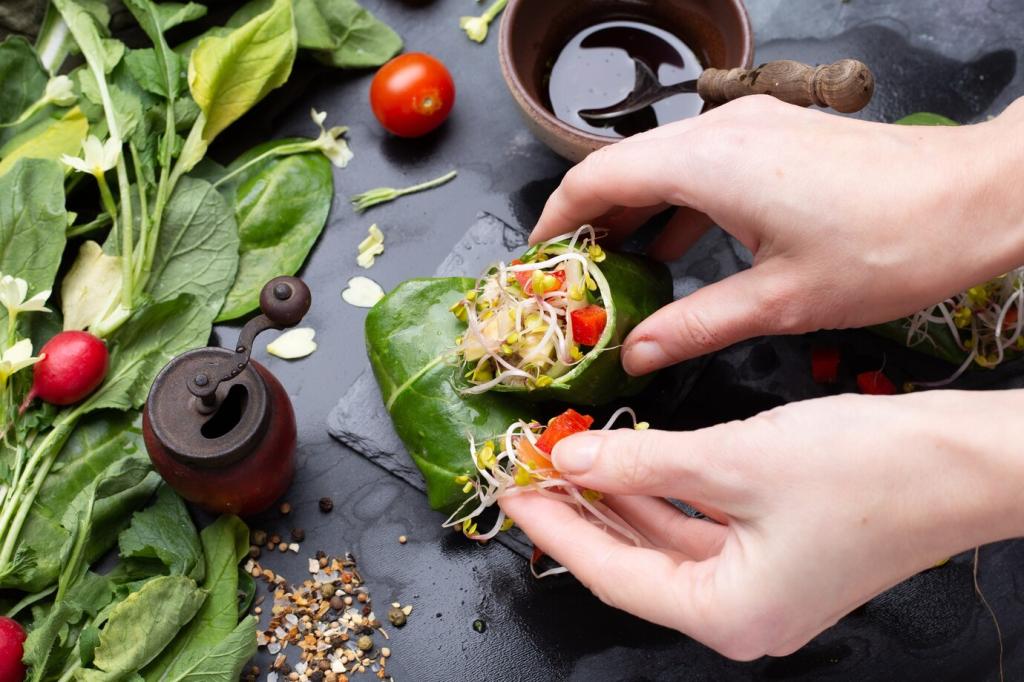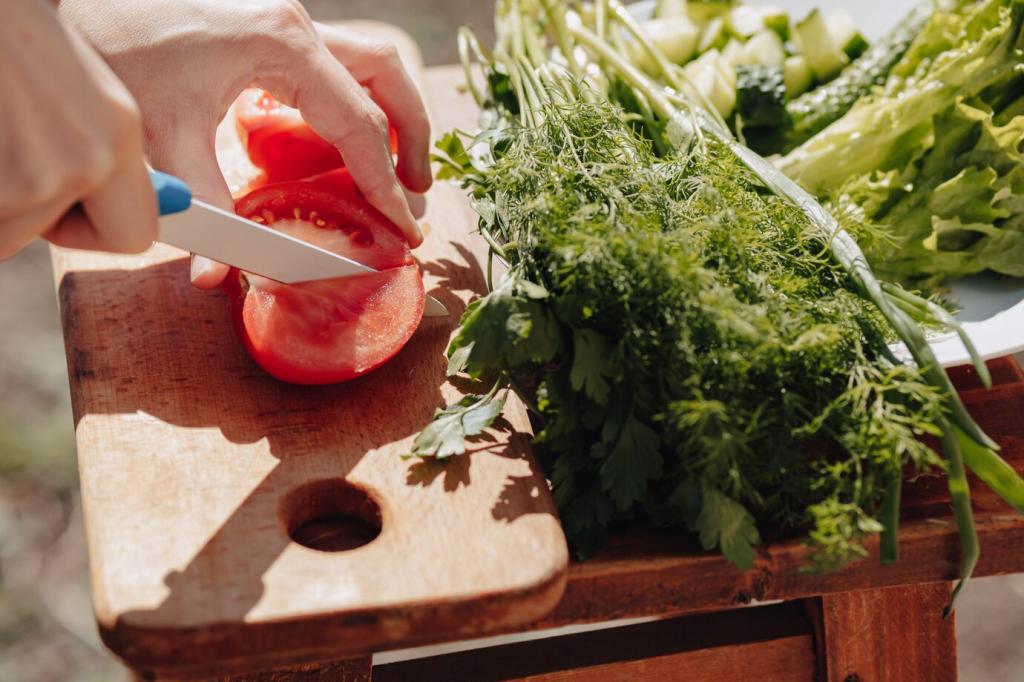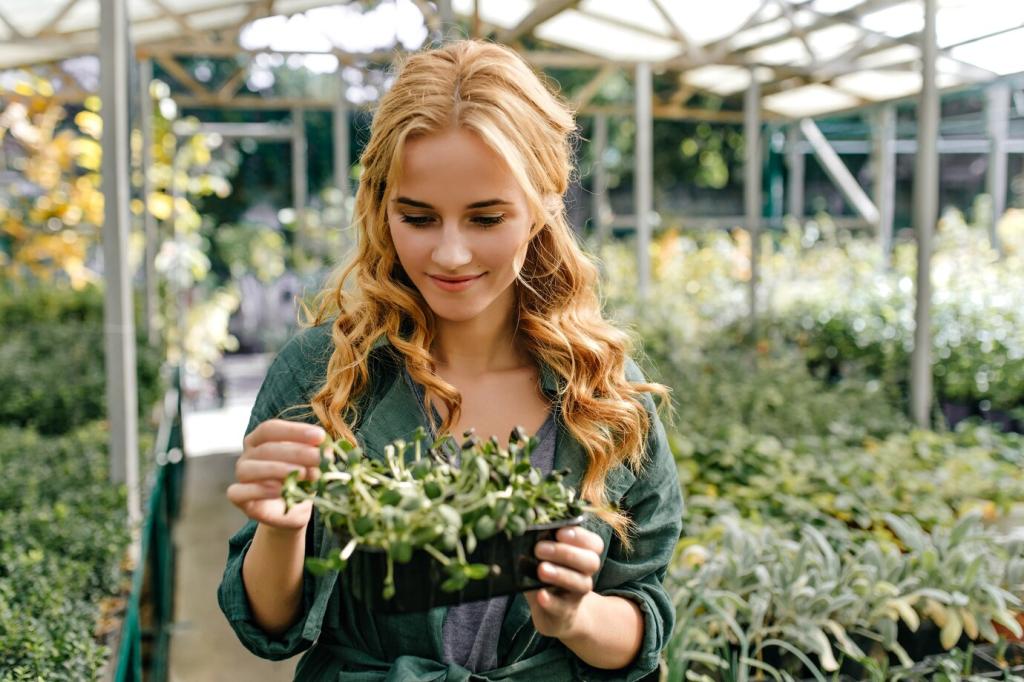Composting Techniques for Organic Cooking: From Scraps to Extraordinary Flavor
Chosen theme: Composting Techniques for Organic Cooking. Welcome to a kitchen-to-garden journey where every peel, stalk, and coffee ground becomes living nutrition, elevating the taste, texture, and aroma of the ingredients you cook with daily.
Why Composting Elevates Organic Cooking
Great flavor starts underground: compost enriches soil microbiology, balancing nutrients plants can access, boosting brix, aromatics, and texture in your homegrown produce. Your sauces taste deeper, your herbs pop brighter, and salads sing with natural sweetness.

Hot Composting for Energetic Cooks
If you create many scraps, hot composting thrives: alternate greens and browns, keep moisture like a wrung sponge, and turn for oxygen. Aim for 131–149°F to reduce pathogens and speed decomposition, producing finished compost in weeks rather than months.
Vermicomposting Right Under the Sink
Red wigglers convert peels, coffee grounds, and tea leaves into silky castings. Provide shredded paper bedding, moderate feeding, and darkness. The result is gentle, nutrient-rich vermicompost that boosts seedling vigor and intensifies herb fragrance in your organic cooking garden.
Bokashi for Compact Spaces and Diverse Scraps
Bokashi uses an airtight bucket and inoculated bran to ferment kitchen scraps, including small amounts of meat or dairy. After fermentation, bury the pre-compost to finish in soil, minimizing odors and fitting neatly into apartment kitchens with limited ventilation.

Greens, Browns, and a Simple Ratio
Greens are moist, nitrogen-rich scraps like veggie peels and coffee grounds; browns are carbon-rich materials like leaves and shredded cardboard. Aim for roughly two parts browns to one part greens by volume, adjusting to maintain pleasant smells and steady heat.
Avoid Contaminants That Complicate Cooking Gardens
Skip glossy paper, oily foods, pet waste, diseased plants, and so-called compostable plastics that rarely break down at home. Keeping inputs clean preserves soil health, reduces microplastic risks, and protects the purity of herbs and vegetables you will actually eat.
Prep Tricks That Speed Decomposition
Chop scraps smaller to increase surface area, freeze fibrous stems to rupture cells, and cover each caddy dump with a layer of browns. Maintain moisture like a wrung sponge, and ensure airflow so microbes thrive without producing sour, anaerobic odors.
Build and Maintain a Thriving Compost System

Begin with a coarse base for airflow, then alternate greens and browns. Moisten dry layers gently, aiming for 50–60% moisture. The squeeze test helps: a handful should feel like a wrung sponge, releasing only a drop or two at most.
Know When It’s Ready—and Put It to Work in Organic Cooking
Simple Maturity Checks That Anyone Can Do
Look for dark, crumbly texture with minimal visible scraps and a pleasant, earthy smell. Try the bag test for stability, or a quick radish germination test to confirm maturity. Finished compost should not reheat or clump into wet, sticky balls.
Applying Compost for Maximum Culinary Payoff
Top-dress herbs and greens with one to two inches, or blend ten to twenty percent into potting mixes. Be cautious with compost tea on edibles; focus on soil drench, not foliage. Expect brighter basil, crispier lettuce, and deeply sweet carrots.
Seasonal Timing to Support Your Menu
Start piles in fall to fuel spring planting, side-dress during summer growth, and cure compost before heavy feeding crops. Our basil doubled in leaf size after a gentle spring top-dress, transforming pesto into a velvety, intensely aromatic celebration of freshness.

Make Composting a Kitchen Habit You’ll Keep
Create a Zero-Friction Scrap Station
Place a countertop caddy near your cutting board and a jar of shredded paper for quick carbon cover. Empty daily, rinse weekly, and celebrate small successes. Share your setup photo in the comments, and subscribe for printable checklists and kitchen-friendly reminder cards.
Track Wins and See Real Impact
Weigh scraps weekly to visualize progress and convert pounds diverted into meals nourished. Post your totals, ask questions, and encourage newcomers. Accountability builds momentum, and your numbers could encourage a neighbor to start composting for better homegrown ingredients.
Build Community and Keep Learning
Swap browns with neighbors, trade seedlings fed by your compost, and visit local gardens for ideas. Join our seasonal challenges, submit photos of harvest-to-plate moments, and subscribe for monthly technique deep-dives tailored to organic cooking goals and flavor-first results.
